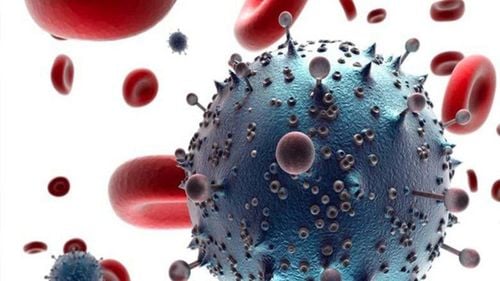This is an automatically translated article.
The article was professionally consulted with Senior Doctor, Dr. Vu Van Tam - Infectious Internal Medicine - Department of Medical Examination & Internal Medicine - Vinmec Ha Long International General Hospital.Infectious diseases are classified into many categories including group A infectious diseases, group B infectious diseases and group C infectious diseases. In which, group C infectious diseases are considered the most “mild” but absolutely not controlled. care, downplaying the diseases in this list.
1. What is a group C infectious disease?
Group C infectious diseases include less dangerous infectious diseases, with the ability to spread not quickly.
2. List of infectious diseases group C
According to the provisions of Point c, Clause 1, Article 3 of the Law on Prevention and Control of Infectious Diseases 2007, the list of group C infectious diseases includes:
Syphilis Syphilis is transmitted mainly through unsafe sex caused by the spirochete Treponema pallidum.
Leprosy is a contagious disease, but it spreads slowly, rarely and is very difficult to spread. Mainly spread through close, frequent and frequent contact with the source of infection, the rate of transmission between husband and wife is only 3-5%.
Gonorrhea Transmitted mainly through sexual contact (vaginal, anal, oral, pharynx). Gonorrhea can be transmitted from mother to baby during labor and birth causing gonorrhea in newborns.
Trachoma is a chronic progressive, contagious keratoconjunctivitis in humans, caused by Chlamydia Trachomatis. Typical lesions in the corneal conjunctiva: trachoma, papillary hyperplasia, blood membrane, leading to scarring of the corneal conjunctiva, causing trismus, cilia and possibly blindness.
Scarlet fever is a disease transmitted to humans through mite larvae, which are both a host and a vector. People become infected when bitten by the larvae and are not capable of transmitting the disease from person to person.
Pharyngitis, stomatitis, heart disease caused by Cocsackie virus (Coxsackie) Cocsackie virus is the cause of a group of diseases including pharyngitis, hand, foot and mouth disease, heart inflammation. The disease is spread through direct contact with nasopharyngeal secretions, feces and aerosol droplets of an infected person.

Nhóm bệnh viêm họng, tay chân miệng và viêm tim do cùng virus gây ra
Infectious pustular dermatitis The causative agent of impetigo is staphylococcus aureus or group A hemolytic streptococcus, the disease is transmitted directly from person to person.
Giardiasis Inflammatory bowel disease (Giardia) A disease transmitted through the fecal-oral route, often with symptoms similar to dysentery syndrome but without blood in the stool. In severe (rare) cases, there may be damage to the lining of the duodenum and jejunum.
Inflammatory bowel disease caused by Vibrio Parahaemolyticus (Vibrio Parahaemolyticus) An acute infectious disease transmitted by the oral route, the disease is usually mild and of little danger, but if Slow detection and not timely treatment can still cause death.
Rickettsia fever
Randomly transmitted to humans by arthropods, lesions characterized by inflammation of small blood vessels by pathogens that live and reproduce in arterial endothelium /small veins and capillaries.
Diseases caused by Colombia (Chlamydia) Also caused by Chlamydia Trachomatis (like trachoma) in the secretions of the cervix, vagina, urethra causing disease. People who are sick but untreated and have no symptoms are most likely to spread the disease through unprotected sex.
Candida albicans (Candida albicans) Female genital fungal disease or vulvovaginitis, a disease not transmitted through sexual contact.
Nocardia disease Nocardia can cause disease in the skin, lungs, brain, heart, causing patients to have chest pain, difficulty breathing, accompanied by fever, chills, fatigue, and weight loss. Transmitted directly from the soil through a break in the skin, most commonly the puncture of a thorn.
Herpes virus disease (Herpes) Disease transmitted from person to person. HSV1 is spread by mouth-to-mouth contact, saliva. HSV 2 is transmitted through sexual contact, maternal transmission and during the perinatal period.
Cytomegalovirus Disease is a leading infectious disease causing deafness, mental retardation and congenital blindness. Oral and respiratory tract is the most prominent route of infection
Hantavirus (Hanta) hemorrhagic fever Humans are infected by inhaling airborne objects formed from waste or animal bites rodents infected with the virus. Hantavirus causes diseases with high mortality.

Động vật gặm nhấm là nguồn lây nhiễm virus Hanta
Trichomoniasis is a sexually transmitted disease or vaginitis caused by trichomoniasis. The disease is mainly sexually transmitted, in addition to being transmitted through baths and wet towels.
Diseases caused by worms Transmitted by eating or drinking by swallowing worm eggs in soil contaminated with human feces, the disease is not transmitted directly from person to person.
Tapeworm disease There are 2 types of tapeworms, pork tapeworms and beef tapeworms, people who eat pork or beef with undercooked fluke larvae will develop into adults, parasitic in the small intestine.
Liver fluke Disease Includes small liver fluke and large liver fluke. People who eat uncooked cyst larvae will enter the stomach, duodenum and then back up to the liver, developing into small adult liver flukes that parasitize and cause diseases in the biliary tract. People who eat raw vegetables growing under water or drink cold water are infected with large liver fluke larvae.
Lung fluke Diseases People or animals that eat shrimp, crabs with undercooked cyst larvae will enter the stomach and intestines, through the digestive tract wall into the abdomen, and then through the diaphragm and pleura into the bronchi to nest. The time from when larvae develop into adult flukes is about 5-6 weeks.
Intestinal fluke disease People or pigs eat aquatic vegetables with undercooked intestinal fluke larvae, the larvae will lose the cystic shell in the duodenum, then attach to the small intestine to parasitize and develop into adult flukes.
Please dial HOTLINE for more information or register for an appointment HERE. Download MyVinmec app to make appointments faster and to manage your bookings easily.













